 W
WAbylopsis is a siphonophore genus in the Abylidae. The genus contains bioluminescent species.
 W
WAegina citrea is a genus of hydrozoans in the family Aeginidae.
 W
WAeginura is a genus of hydrozoans in the family Aeginidae.
 W
WAequorea is a genus of pelagic hydrozoans in the family Aequoreidae.
 W
WAequorea victoria, also sometimes called the crystal jelly, is a bioluminescent hydrozoan jellyfish, or hydromedusa, that is found off the west coast of North America.
 W
WAgalma is a genus of siphonophores in the family Agalmatidae. Siphonophores are colonial hydrozoans that feed on zooplankton.
 W
WAnthomastus is a genus of soft corals in the family Alcyoniidae.
 W
WApolemia is a genus of siphonophores. It is the only genus in the monotypic family Apolemiidae.
 W
WAtolla is a genus of crown jellyfish in the order Coronatae. The genus Atolla was originally proposed by Haeckel in 1880 and elevated to the monotypic family level, as Atollidae by Henry Bigelow in 1913. The six known species inhabit the mesopelagic zone. The medusae possess multiple lobes called lappets at the bell margin. Medusae also have eight tentacles, alternating with eight rhopalia, and twice as many lappets occur as tentacles.
 W
WCampanularia is a genus of hydrozoans, in the family Campanulariidae.
 W
WCavernularia is a genus of marine cnidarians in the family Veretillidae.
 W
WColobonema is a genus of deep-sea hydrozoans.
 W
WCrossota is a genus of hydrozoans of the family Rhopalonematidae. The genus comprises five species. Unlike most hydromedusae, these do not have a sessile stage. Rather, they spend their entire lives in the water column as plankton. The genus Crossota is widespread throughout the oceans.
 W
WCunina is a genus of hydrozoan in the Cuninidae. The genus contains bioluminescent species.
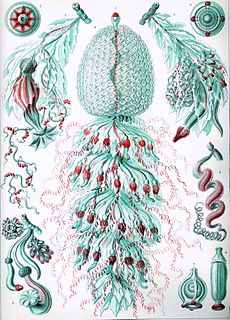 W
WForskalia is a genus of siphonophores. It is the only genus in the monotypic family Forskaliidae.
 W
WThe helmet jellyfish is a luminescent, red-colored jellyfish of the deep sea, belonging to the order Coronatae of the phylum Cnidaria. It is the only species in the monotypic genus Periphylla.
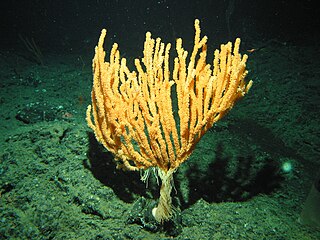 W
WIsidella is a genus of deep-sea bamboo coral in the family Isididae.
 W
WKeratoisis is a genus of deep-sea bamboo coral in the family Isididae, containing the following species:
 W
WLepidisis is a genus of deep-sea bamboo coral in the family Isididae. It contains the following species:
 W
WObelia is a genus of hydrozoans, a class of mainly marine and some freshwater animal species that have both polyp and medusa stages in their life cycle. Hydrozoa belongs to the phylum Cnidaria, which are aquatic organisms that are relatively simple in structure.
 W
WParazoanthus is a genus of anemone-like anthozoans in the order Zoantharia.
 W
WPelagia is a genus of jellyfishes in the family Pelagiidae. It is currently considered as monotypic with one species, Pelagia noctiluca (Forsskål, 1775).
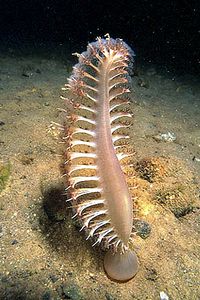 W
WPennatula is a genus in the family Pennatulidae. The genus contains bioluminescent species.
 W
WPoralia is a genus of jellyfish in the family Ulmaridae. It is a monotypic genus containing a single species, Poralia rufescens. This jellyfish is pelagic, and is found in deep water in most of the world's oceans.
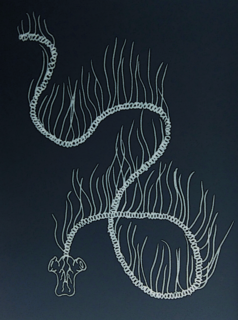 W
WPraya is a genus of marine invertebrates in the order Siphonophora. They are colonial, but the colonies can superficially resemble jellyfish; although they appear to be a single organism, each specimen is actually a colony of Siphonophora. It contains the following species:Praya dubia (Quoy & Gaimard in de Blainville, 1830) Praya reticulata (Bigelow, 1911)
 W
WThe Praya dubia, or giant siphonophore, is an invertebrate which lives in the deep sea at 700 m (2,300 ft) to 1,000 m (3,300 ft) below sea level. It has been found off the coasts around the world, from Iceland in the North Atlantic, to Chile in the South Pacific.
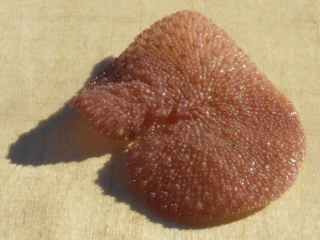 W
WRenilla is a genus of sea pen. It is the only genus within the monotypic family Renillidae.
 W
WRenilla koellikeri is a species of sea pen that has been reported from the southern coast of California, including Santa Barbara, California.
 W
WRenilla muelleri is a species of sea pansy. It has been reported from the Gulf Coast of the United States, notably the Florida panhandle, but is also reported from the eastern coast of South America. It is thought to be a euryhaline littoral species, found to a depth of up to 150 meters.
 W
WThe sea pansy, Renilla reniformis, is a species of colonial cnidarian in the family Renillidae, part of an octocoral subclass of Anthozoa that inhabit an expansive range of environments. It is native to warm continental shelf waters of the Western Hemisphere. It is frequently found washed ashore on North East Florida beaches following northeasterly winds or rough surf conditions. It also can often be found living intertidally completely buried in the sand. Its predator is the striped sea slug, Armina tigrina.
 W
WSea pens are colonial marine cnidarians belonging to the order Pennatulacea. There are 14 families within the order; 35 extant genera, and it is estimated that of 450 described species, around 200 are valid. Sea pens have a cosmopolitan distribution, being found in tropical and temperate waters worldwide, as well as from the intertidal to depths of more than 6100m. Sea pens are grouped with the octocorals, together with sea whips or gorgonians.
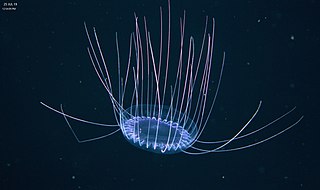 W
WSolmissus, or dinner plate jellyfish, is a genus of hydrozoans. Its species are unique among cnidarians in that they actively hunt for prey as opposed to passively waiting for plankton to pass by. They are found in the deep waters of Monterey Bay, California. They are most likely to be found in the deep sea, mid water. They grow to be 20 cm (7.9 in) in diameter. These hydrozoans feed on gelatinous zooplankton, including salps and doliolids, ctenophores, jellyfish, and copepods.
 W
WUmbellula is a genus of cnidarians in the family Umbellulidae. The genus contains bioluminescent species.
 W
WVeretillum is a genus in the family Veretillidae. The genus contains bioluminescent species.
 W
WVirgularia is a genus of sea pen in the family Virgulariidae.